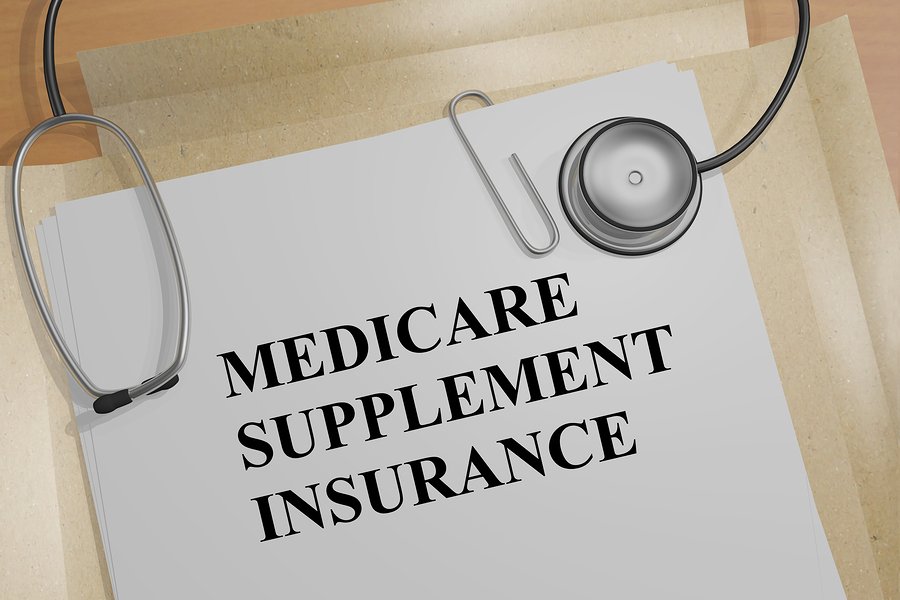More than half of all individuals who first became eligible for Medicare in 2020 and purchased supplemental coverage selected Plan G, according a new study reported by the American Association for Medicare Supplement Insurance (AAMSI).
“Some 11,000 Americans turn 65 every day which means they must make consequential decisions regarding their Medicare coverage,” said Jesse Slome, AAMSI’s director. “Available plan choices changed starting in 2020 with the elimination of Plans C and F for new Medicare enrollees.”
Plan F had previously been the most popular Medigap plan choice for new enrollees. According to the study, the top choice in 2020 was Plan G.
“Medicare Plan G has replaced Plan F as the most popular Medigap choice among seniors turning age 65,” Slome added. “It offers great value to those willing to pay a small annual deductible. Plan G provides full coverage for gaps in Medicare such as the hospital deductible, co-pays and coinsurance as well as the 20% that Medicare Part B doesn’t cover.”
About a third (32.8%) of buyers selected Plan N, the survey found.
“Plan N generally has lower premiums that G which makes it an attractive option for many,” Slome said.
The survey of several thousand policy buyers was conducted for AAMSI by MedicareFAQ.com, a leading provider of Medicare insurance plans for consumers nationwide.
The American Association for Medicare Supplement Insurance advocates for the importance of insurance protection. To access the latest Medicare insurance statistics, go to www.medicaresupp.org/facts-2021. AAMSI produces the national Medigap industry conference (Chicago, September 8-10, 2021) and makes available a national online directory listing local Medicare insurance agents.
2020 Medigap New Enrollee Survey Findings
Plan B, D & K: 0.1%
Plan F*: 2.5%
Plan G: 58.8%
Plan HDG: 5.8%
Plan N: 32.8%
* Individuals already on Medicare (example; disability) with Plan F prior to 2020 were able to keep Plan F when they turned age 65. Source: AAMSI.














They choose what fits best for their budget, simple as that.
They choose what fits best for their budget, simple as that.
Most of my supp clients still go for the G, although I also show the N.
(not an agent)
Yay for HDG! > 5%! :laugh:
They buy what I advise. GGGGGGG
The phones are silent because of it.
I explain G, but also explain the world of Medigap is changing. It's their choice, but if it were my dad, who could absolutely never buy another Medigap plan again, I'd tell him to buy N.
(I've noticed when I tell people if their situation was my dad's situation, I'd pick X, they love it. Luckily, what I advise them IS what I'd tell my dad.)
So on plan N if the premium $70 you make 20% x $70 or $168 a yr commission? The same G premium is what maybe $130 x 20% . If you drop someone from a plan G to a plan F is there any underwriting? If they allow that does the agent make a new commission ?
So on plan N if the premium $70 you make 20% x $70 or $168 a yr commission? The same G premium is what maybe $130 x 20% . If you drop someone from a plan G to a plan F is there any underwriting? If they allow that does the agent make a new commission ?
( Caveat, I am not an agent. )
G to F is a plan change just like F to G. I would expect the same rules for whether or not underwriting is required would apply to either change.
( Caveat, I am not an agent. )
G to F is a plan change just like F to G. I would expect the same rules for whether or not underwriting is required would apply to either change.
The G and the N where I am are maybe $20 ish dollars different. If it were $60 like your illustration, that may make a bigger impact in their choices.
Just curious, why the N over the G. My parents are each going on two different plan types based on how I know they will get used by each.
The G and the N where I am are maybe $20 ish dollars different. If it were $60 like your illustration, that may make a bigger impact in their choices.
Just curious, why the N over the G. My parents are each going on two different plan types based on how I know they will get used by each.
You're completely right about fitting client based on usage. $20 per month is about where it is here too.
Just for Don, CSO has an 8% increase in comm rate to sell N over G here, UHC has a flat comm rate, so comm all evens out.
If they're healthy, or willing to take on more risk I point them to N because G is now GI. I absolutely don't know the future, but logically over time I think you're going to see the gap widen between N and G.
Excess is incredibly unlikely here and they have to go to the doctor 3-4x a year before they get covered anyway.
Wellness, 2-3 visits before Part B deductible is met. Average person goes to the doctor 7x a year, at most.
While $20 is the max copay, it's closer to like $12.
3 visits for Part B deduct and Wellness – 7 visits annually = 4 copay visits x $20 copay = $80 max.
$240 – $80 = $160.
Average person will save $160 a year over G… immediately.
BUT, I'm really looking 3-5 years down the road. If it plays out the way I think it will (and it may not) G is going to be 50-60 more a month than N. I've saved those people that may not be able to pass underwriting $500-$600 in the future for just staying where they are.
ALL SPECULATION.. but logically that's how I think it'll play out. At worst, the gap stays the same. The costs likely won't explode to the point where they have to pay a significant amount more under N, if at all.
For me, it's kind of the same argument I have for HDG. You have to pass underwriting of IEP, the insurance company pass less in claims annually, cost stay lower.
I'd rather pay when I use it and $30-$70 a month vs paying for a Cadillac when all I need is a moped.
You're completely right about fitting client based on usage. $20 per month is about where it is here too.
Just for Don, CSO has an 8% increase in comm rate to sell N over G here, UHC has a flat comm rate, so comm all evens out.
If they're healthy, or willing to take on more risk I point them to N because G is now GI. I absolutely don't know the future, but logically over time I think you're going to see the gap widen between N and G.
Excess is incredibly unlikely here and they have to go to the doctor 3-4x a year before they get covered anyway.
Wellness, 2-3 visits before Part B deductible is met. Average person goes to the doctor 7x a year, at most.
While $20 is the max copay, it's closer to like $12.
3 visits for Part B deduct and Wellness – 7 visits annually = 4 copay visits x $20 copay = $80 max.
$240 – $80 = $160.
Average person will save $160 a year over G… immediately.
BUT, I'm really looking 3-5 years down the road. If it plays out the way I think it will (and it may not) G is going to be 50-60 more a month than N. I've saved those people that may not be able to pass underwriting $500-$600 in the future for just staying where they are.
ALL SPECULATION.. but logically that's how I think it'll play out. At worst, the gap stays the same. The costs likely won't explode to the point where they have to pay a significant amount more under N, if at all.
For me, it's kind of the same argument I have for HDG. You have to pass underwriting of IEP, the insurance company pass less in claims annually, cost stay lower.
I'd rather pay when I use it and $30-$70 a month vs paying for a Cadillac when all I need is a moped.
Seems reasonable. My concern is that although excess is a non-issue where I am currently, it may become an issue in the event that Medicare is expanded. We already have providers in my area limiting their Medicare case load due to low reimbursements. Also pure speculation on my part. Definitely good to warn them about premium increases that will be coming their way annually.
Seems reasonable. My concern is that although excess is a non-issue where I am currently, it may become an issue in the event that Medicare is expanded. We already have providers in my area limiting their Medicare case load due to low reimbursements. Also pure speculation on my part. Definitely good to warn them about premium increases that will be coming their way annually.
It's all really up to them. I give them information and they evaluate their risk tolerance and make a decision.
It's the same for MAPD. I literally don't care what they pick… provided they make an informed decision.
It's all really up to them. I give them information and they evaluate their risk tolerance and make a decision.
It's the same for MAPD. I literally don't care what they pick… provided they make an informed decision.
Ran into a G today . Guy age 75 paying $144 a month which I thought was cheap . Has had 9 yrs . But his pdp was $92 a month shuck seems expensive. Both with United
He's probably taking all generics too.